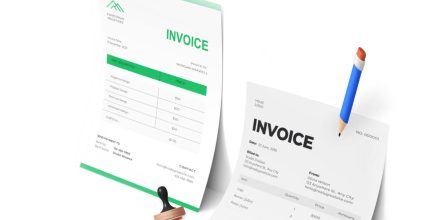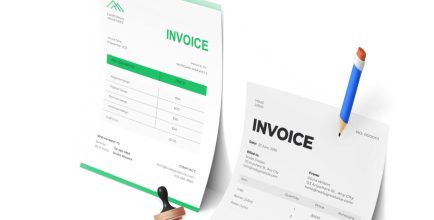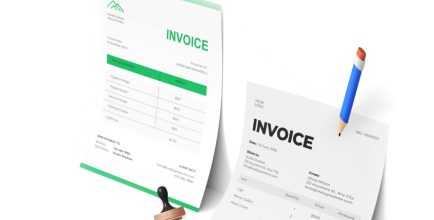Understanding Estimated Tax Payments
Estimated tax payments are essentially prepayments of tax on income that doesn’t have taxes automatically withheld, such as earnings from freelance work, business profits, dividends, and capital gains. This requirement also extends to entities like corporations.
Sometimes, even employees who receive a W-2 may need to make these payments if their paycheck withholdings don’t sufficiently cover their tax obligations for the year. The amount withheld from a paycheck largely depends on the information submitted through the W-4 form to an employer upon starting employment.
Who is Required to Pay Estimated Quarterly Taxes?
Understanding who needs to pay estimated quarterly taxes is crucial for managing your tax obligations effectively. Essentially, these payments apply to various types of income that do not have taxes withheld at the source. Here are the key situations in which you would need to make estimated tax payments:
- Employees with Insufficient Withholding: If you’re a W-2 employee and your withholdings fall short—meaning you expect to owe more than $1,000 in federal income tax after subtracting withheld wages and applicable refundable tax credits—you’re likely required to pay estimated taxes. This applies if your withholdings and refundable credits are less than 90% of your tax liability for the current year or under 100% of your tax liability for the previous year. For individuals with an adjusted gross income exceeding $150,000 last year, or $75,000 for those who are married and filing separately, the threshold increases to 110%.
- Business Entities: Corporations faced with a federal income tax liability exceeding $500 for the year must make estimated tax payments.
- Self-Employed Individuals: Freelancers, contractors, or those running a side business generating extra income are required to pay estimated taxes if they anticipate owing over $1,000 in income tax for the year. Unlike traditional employees, their income doesn’t automatically have taxes withheld.
- Landlords and Investors: Individuals earning income through rental properties or investments might need to pay estimated taxes for these earnings. This scenario often includes considering any landlord-specific tax deductions that might apply.
Circumstances That May Exempt You From Making Estimated Tax Payments
Indeed, there are specific instances where individuals might not need to make estimated tax payments. For employees earning a wage or salary, one option to bypass estimated taxes is to increase the amount withheld from each paycheck. This adjustment can be made by completing a new W-4 form and submitting it to your employer.
Furthermore, certain conditions related to your tax situation from the previous year could exempt you from needing to make estimated payments.
The IRS outlines that to be exempt, the following criteria must be met simultaneously: you had no tax liability in the previous tax year (meaning you either did not owe any tax, your total tax was $0, or you were not required to file an income tax return at all), you were a U.S. citizen or a resident alien for the entire tax year, and the tax year in question spanned a full 12 months.
Calculating Your Quarterly Estimated Tax Payments
Calculating your quarterly estimated tax payments doesn’t have to be complicated. There are two primary approaches that you can utilize based on the predictability of your income and overall tax liability. These methods cater to different financial scenarios, ensuring that taxpayers can choose the most accurate means of estimating their dues.
- Annualized Income Approach: This method is particularly beneficial for those with fluctuating incomes, such as freelancers or business owners experiencing varied earnings throughout the year. By estimating your total yearly tax liability based on your expected income and deductions for the entire year, you can determine a more precise amount for your quarterly estimated tax payments. This flexibility allows for adjustments in your payments as your income or deduction estimates change.
- Prior-Year Tax Estimation: For individuals with more consistent income streams that are subject to estimated taxes, the prior-year tax estimation provides a simpler calculation method. By basing your estimated yearly tax on the amount you paid in the previous year and then dividing that number by four, you can arrive at your quarterly payment amount. This method ensures a steady payment schedule tailored for those with predictable financial landscapes.
How To Make Your Estimated Tax Payments
Once you’ve calculated your estimated tax payments for the quarter and are ready to pay, the IRS provides a variety of payment options to accommodate different preferences:
- Online via Your IRS Account: Access the IRS website and log into your account to make payments directly.
- Using the IRS2Go App: Download the official IRS mobile app, IRS2Go, to submit payments conveniently from your smartphone.
- IRS Direct Pay: Opt for Direct Pay to make payments using your bank account on the IRS website without any additional fees.
- Debit or Credit Card Payments: Pay with your debit or credit card. Note that there may be processing fees associated with these types of transactions.
- Electronic Federal Tax Payment System (EFTPS): Enroll in EFTPS for an online payment solution geared towards both individuals and businesses.
- Cash Payments at Retail Partners: For those preferring to pay in cash, the IRS collaborates with select retail partners, including Walgreens and 7-Eleven, to accept tax payments.
- Mail Using a Payment Voucher: Although less recommended due to the potential for delays, you can mail your estimated tax payment along with a payment voucher.
Conclusion
Navigating the world of estimated taxes can be daunting, but understanding your obligations, how to calculate your payments, and the methods available for payment can significantly simplify the process. Whether you are a self-employed individual, landlord, investor, or a W-2 employee with insufficient withholdings, staying informed and proactive about your estimated tax payments is crucial to avoiding potential penalties.
Remember, making estimated tax payments is not just about compliance with the IRS; it’s also a strategic approach to managing your finances effectively throughout the year. By planning ahead and making use of the tools and resources provided by the IRS, you can ensure that you meet your tax obligations with confidence and ease.



